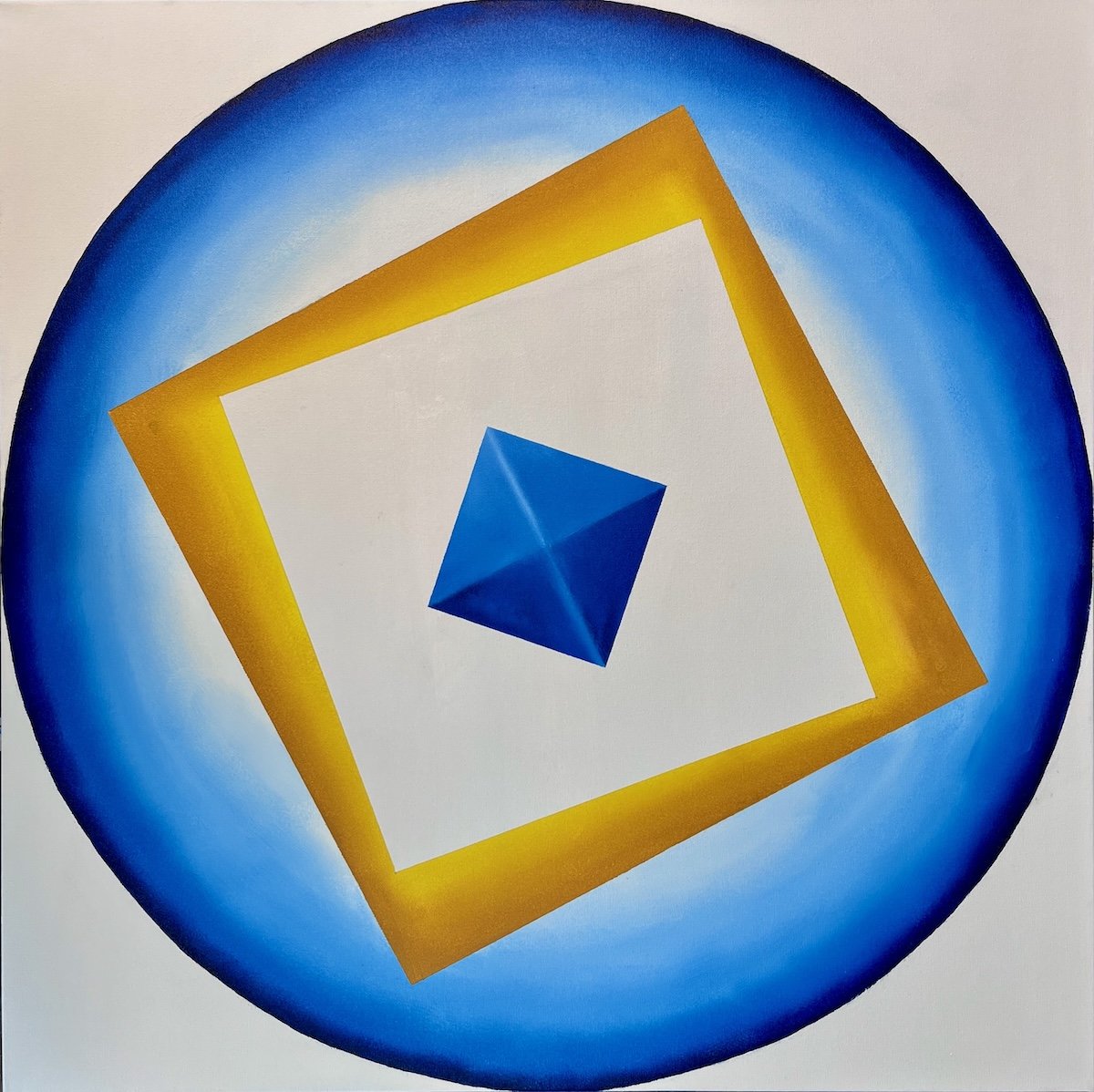Solo show Geometrica is on view at ryan james fine arts, Kirkland WA, 1-31 May 2025!
It’s my intense sense of individualism that leads to my focus on visual abstraction – and more specifically, to non-objective abstraction, in which there are few or no visual cues to the relationship between the visual composition and any human or physical objects in the world. I want to interpret paintings my way, and I want my viewers to interpret my pieces in their individual ways.
Geometric abstraction forms the basis of many of my compositions. Geometric shapes interact with plain or carefully mottled backgrounds. Their relative slopes, colors, and heft imply movement or stasis, balance or imbalance, and even power relationships.
I’m especially inspired by non-objective “Suprematism” championed by Kazimir Malevich and his contemporaries in pre-Revolutionary Russia, and generally inspired by 20th-century hard-edge and color-field paintings.
Color, in each of its dimensions, is vitally important – even in its absence. I don’t rely on a generalized characterization of colors. I rely on the juxtaposition of colors and values to convey potential impact. Any color rendered in paint seems ‘warm’ to me, because of the lusciousness of solidly applied paint.
For me, straight lines convey dynamism, simply because they move (and move the eye) directly and expediently from one place to another. Vertical lines are often divisive; horizontal lines evoke the horizon – and thus should be used sparingly (if at all) in non-objective compositions. Diagonal lines move the eye across two dimensions, and are thus inherently more dynamic. I often prefer positively sloped diagonals, because they may be hopeful to any viewer accustomed to reading from left to right.
It's trite to say that circles are “perfect” in their enclosure of space, but they are. Their constant radii are comforting, as is their association with eggs and with the womb. I paint circles as enclosures – more focused on the interior than the figure.
However, sided figures – triangles, quadrilaterals, and the like -- behave like figures (actors, if you will), within a composition. They develop characteristics akin to personalities.
Enjoy the lines, bars, rectangles, triangles, circles, and arcs cavorting on color-filled -- or color-less -- grounds. Inspired by Albers, Kandinsky, Malevich, and Mondrian, these compositions maximize viewers' ability to decide what the image and interactions mean to them.

